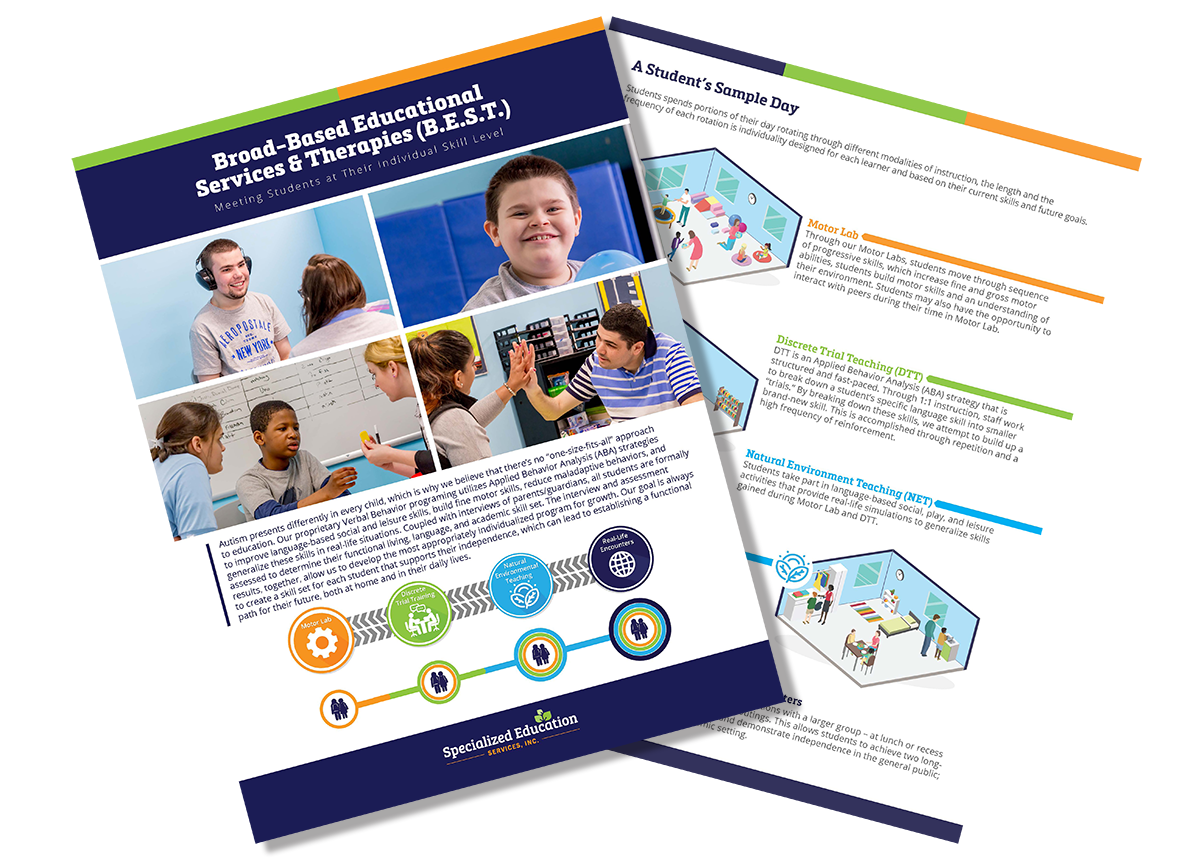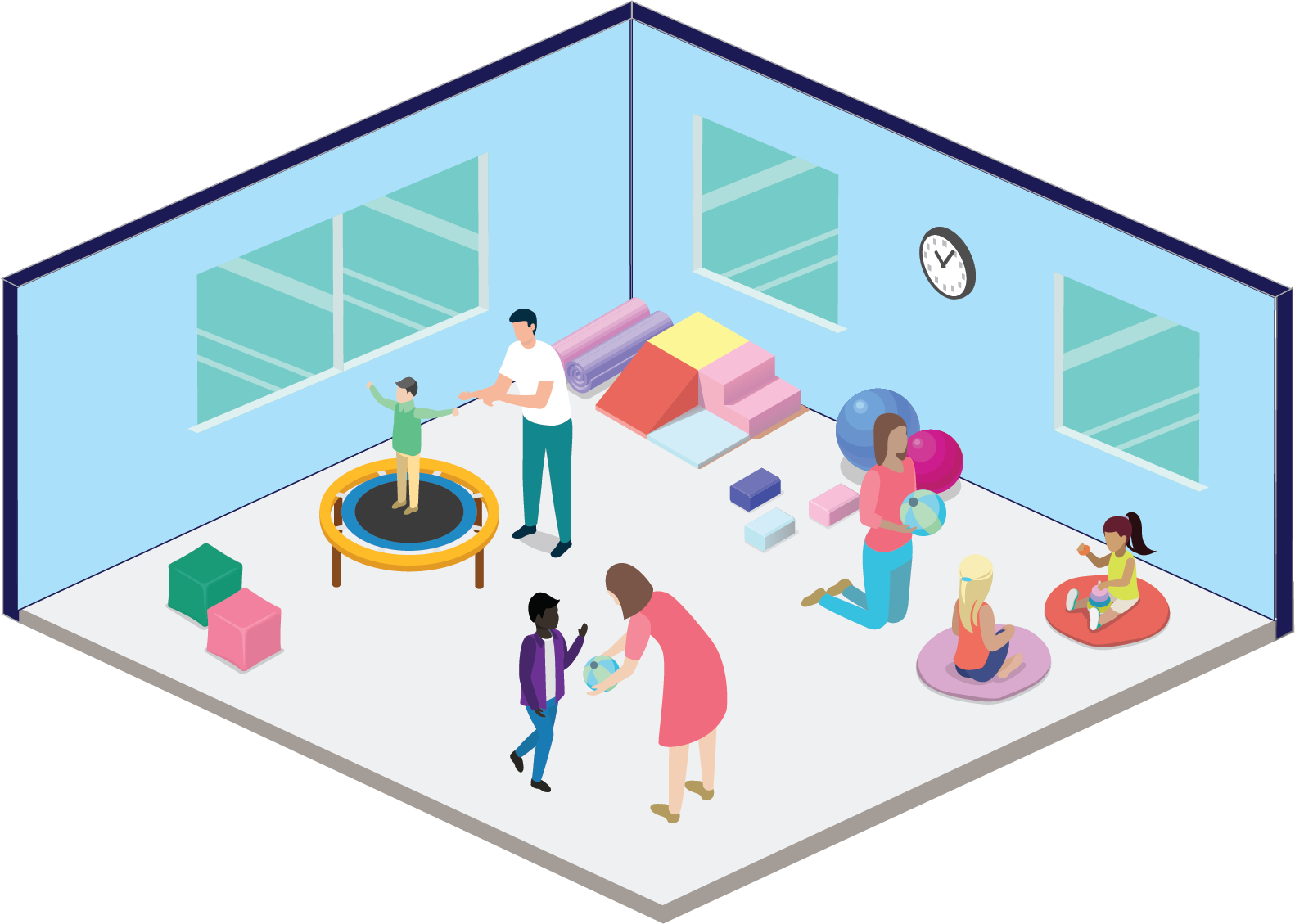Broad-Based Educational Services & Therapies
Broad-Based Educational Services and Therapies (B.E.S.T.) Model
Serving students with significant autism & developmental delays, our model takes learned skills and practically applies them to the multiple environments in which a student would use those skills. Students spend portions of their day rotating through different modalities of instruction. The length and the frequency of each rotation is individually designed for each learner based on their current skills and future goals.
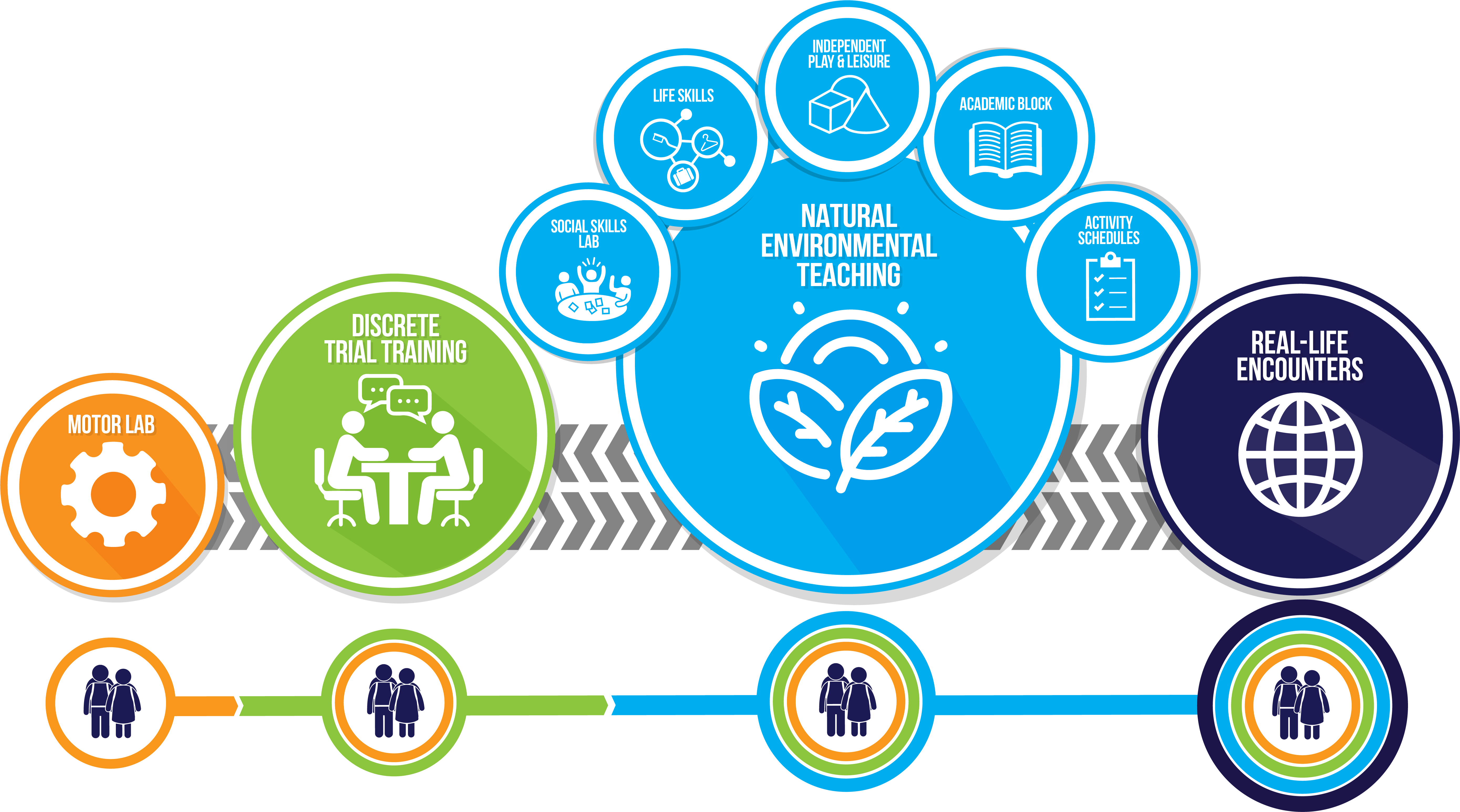
Broad-Based Educational Services and Therapies (B.E.S.T.) Model
Motor Lab
During Motor Lab, students increase fine and gross motor abilities and understanding of their environment by moving through a sequence of progressive skills. Students may also have the opportunity to interact with peers during this time.
Broad-Based Educational Services and Therapies (B.E.S.T.) Model
Discrete Trial Teaching (DTT)
DTT is an Applied Behavior Analysis (ABA) strategy that is structured and fast-paced. Through 1:1 instruction, staff work to break down a student’s specific language skill into smaller “trials.” By breaking down these skills, we attempt to build up a brand-new skill. This is accomplished through repetition and a high frequency of reinforcement.
Broad-Based Educational Services and Therapies (B.E.S.T.) Model
Natural Environment Teaching (NET)
Students take part in language-based social, play, and leisure activities that provide real-life simulations to generalize skills gained during Motor Lab and DTT.
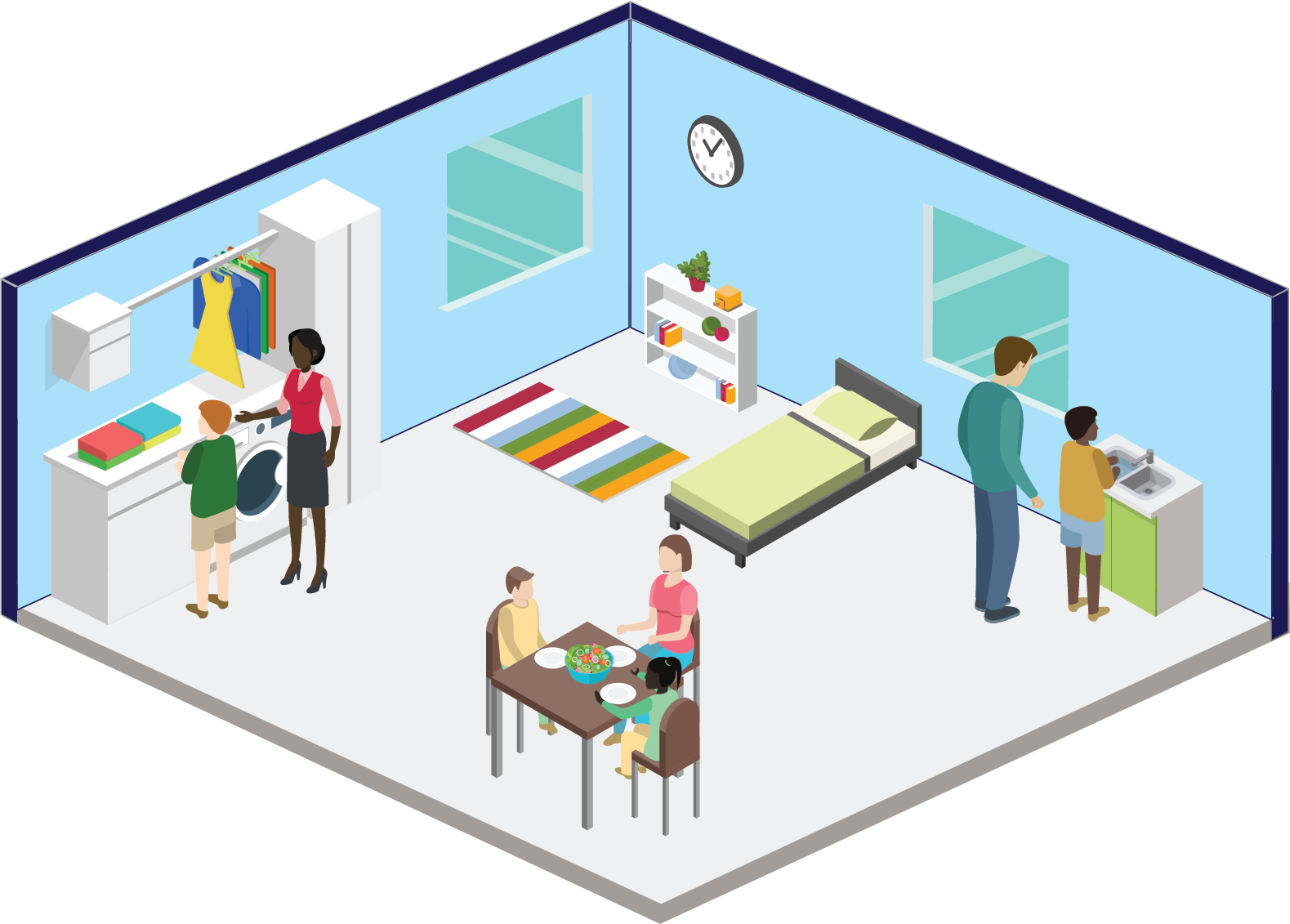
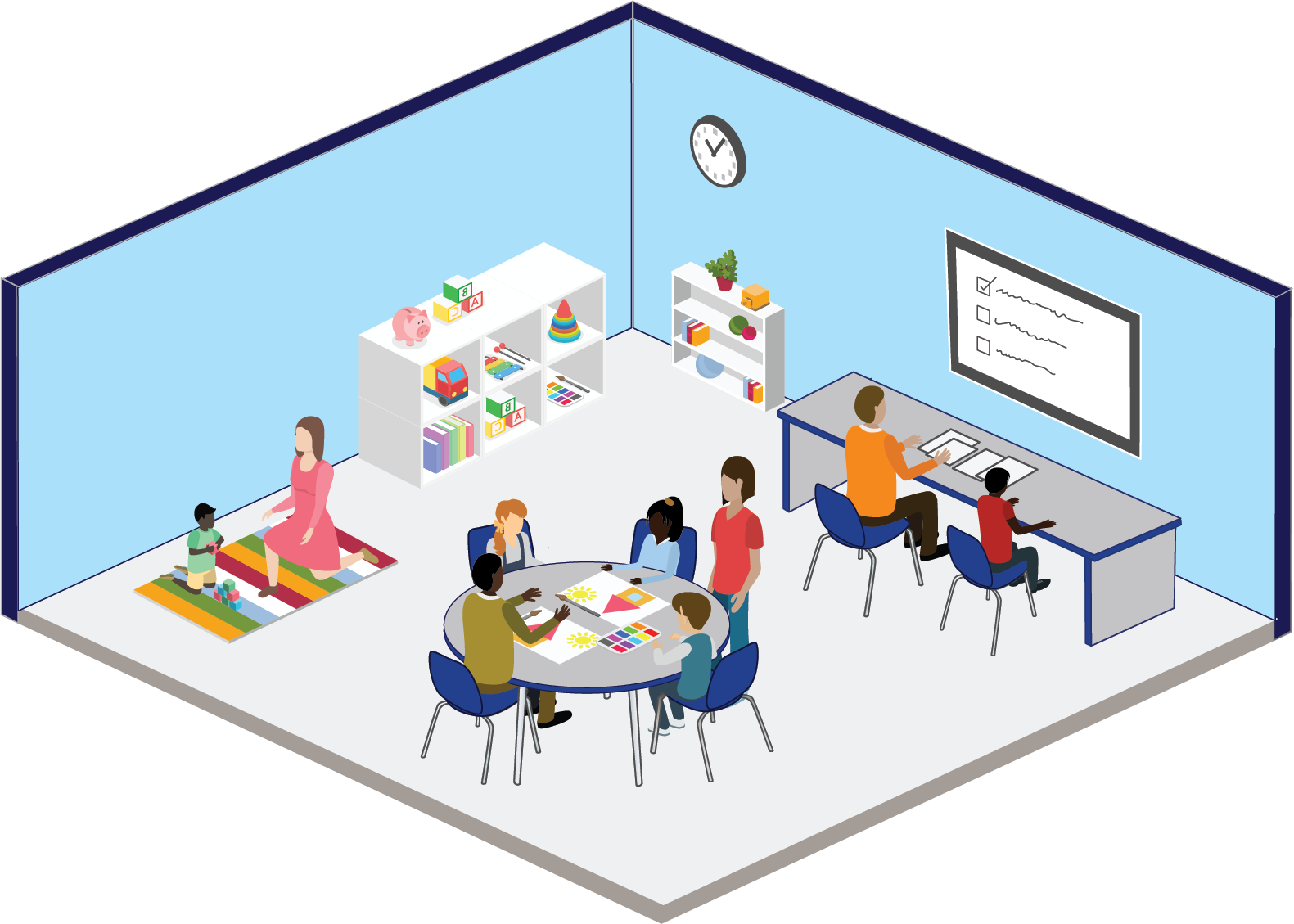
Behavioral Management & Support
Each student enrolled in the Broad-Based Educational Services and Therapies (B.E.S.T.) Model has behavior programming individualized to his or her needs, identified during a Functional Behavioral Assessment (FBA). First, we identify the behaviors that disrupt a student’s ability to access the environment and learning. We then use the data collected from the FBA and the classroom to devise strategies that get to the root cause of the student’s disrupted behaviors, always providing them with the tools to develop positive replacement behaviors.
Our Behavior Management System is reinforced through the use of 6 effective teaching strategies.

